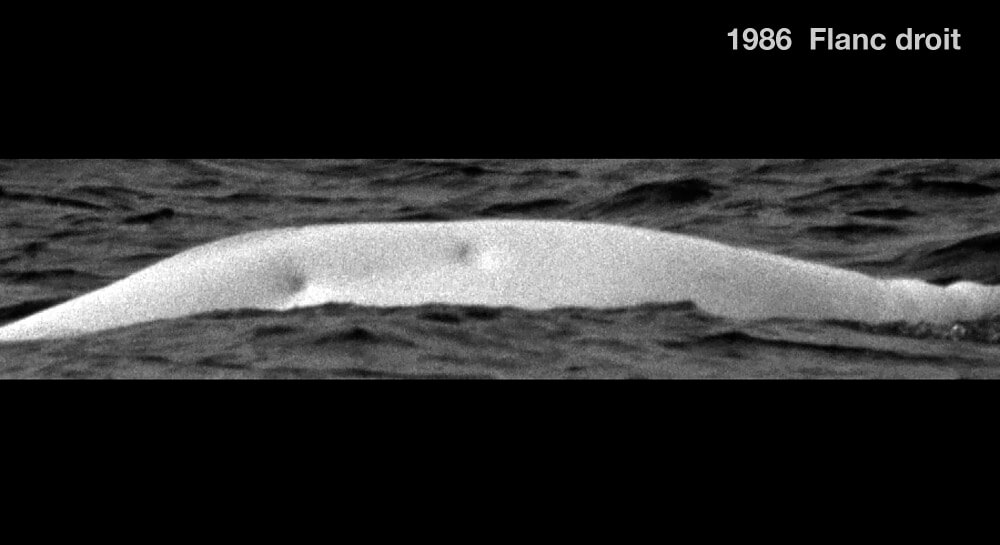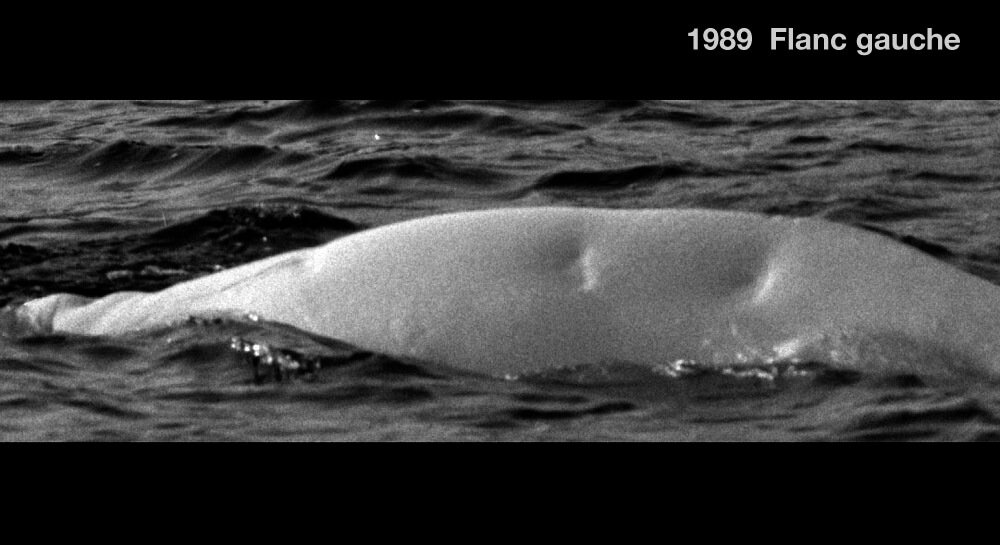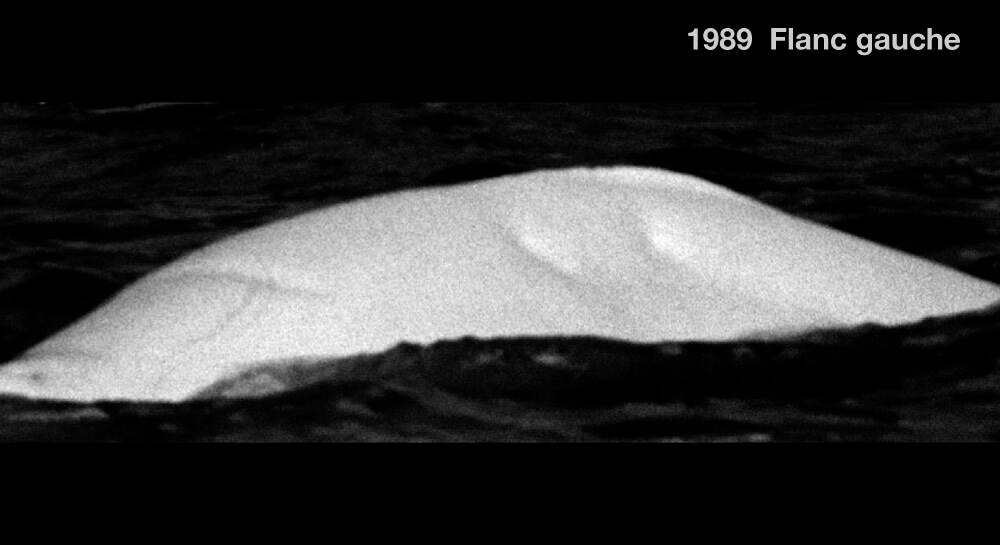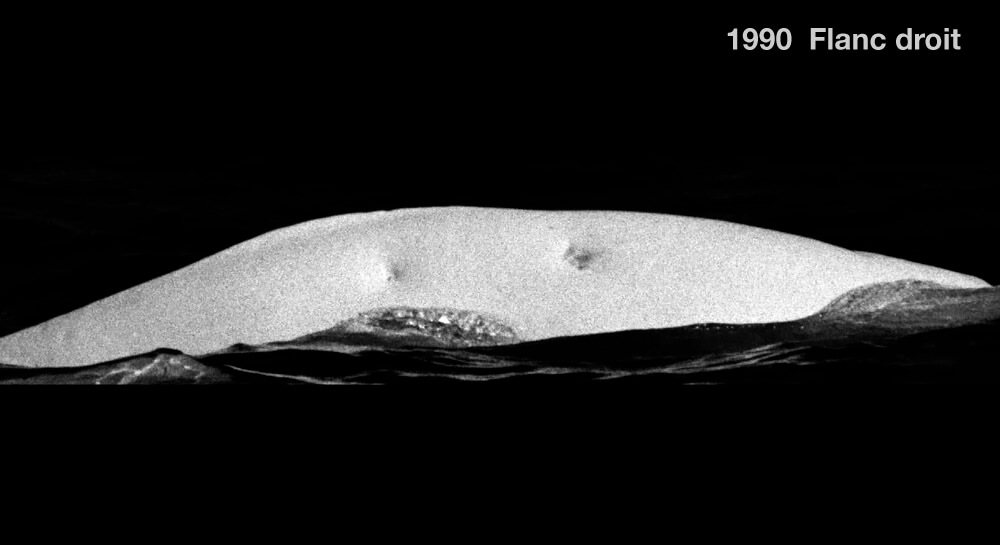Vagabonde
Beluga


Adopted by Peinture Internationale
-
ID number
DL0028
-
Sex
Female
-
Year of birth
Before 1969
-
Known Since
1985
Distinctive traits
The mark on her neck stretches along both of Vagabonde’s flanks. She also bears two scars, in front and below the dorsal crest on each flank. Her dorsal crest has two small notches in the front.
Life history
First observed in 1985, Vagabonde was completely white. She was therefore born before 1969.
According to her habits and associations, Vagabonde is a female. She would be part of the female community on the south shore of the St. Lawrence River.
Sainte-Marguerite Bay, in the Saguenay Fjord, is a prime summer habitat for belugas, including females like Vagabonde. Sometimes, belugas can be seen in a spying position, poking their heads out of the water, or noticing pectoral fins and tails at the surface. You can also hear their vocalizations, such as bellowing or whistling.
Observations history in the Estuary
Years in which the animal was not observed Years in which the animal was observed
Latest news
We are one nautical mile off Cap de la Tête au Chien, Charlevoix. We observe a herd of two individuals, young ones. Then, all of a sudden, we come across Vagabonde swimming away, diving and coming back to the same spot several times. We leave her, as in the distance we spot another group of 8 to 10 belugas.
Vagabonde was last seen over 25 years ago. Is she dead? Has she remained invisible to researchers all this time? One thing’s for sure, her story remains a valuable source of information, helping us to better understand this fragile population.
Sponsor
Peinture Internationale adopted Octave, Aile Joyeuse, Blanche-Neige, Oreillette, Patte d’Oie and Vagabonde (1988).




